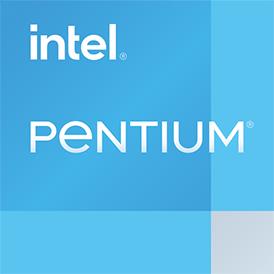 Geekbench 3, 64bit (Multi-Core)
Geekbench 3, 64bit (Multi-Core)
|
|
Intel Pentium G4520
2C 2T @ 3.6 GHz
|
6268
|
|
|
Intel Pentium G3460
2C 2T @ 3.5 GHz
|
5054
|
 Geekbench 3, 64bit (Single-Core)
Geekbench 3, 64bit (Single-Core)
|
|
Intel Pentium G4520
2C 2T @ 3.6 GHz
|
3546
|
|
|
Intel Pentium G3460
2C 2T @ 3.5 GHz
|
2860
|
 Estimated results for PassMark CPU Mark
Estimated results for PassMark CPU Mark
|
|
Intel Pentium G4520
2C 2T @ 3.6 GHz
|
2952
|
|
|
Intel Pentium G3460
2C 2T @ 3.5 GHz
|
2191
|
 Geekbench 5, 64bit (Multi-Core)
Geekbench 5, 64bit (Multi-Core)
|
|
Intel Pentium G4520
2C 2T @ 3.6 GHz
|
1757
|
|
|
Intel Pentium G3460
2C 2T @ 3.5 GHz
|
1546
|
 Geekbench 6 (Multi-Core)
Geekbench 6 (Multi-Core)
|
|
Intel Pentium G3460
2C 2T @ 3.5 GHz
|
1402
|
|
|
Intel Pentium G4520
2C 2T @ 3.6 GHz
|
1360
|
 Geekbench 5, 64bit (Single-Core)
Geekbench 5, 64bit (Single-Core)
|
|
Intel Pentium G4520
2C 2T @ 3.6 GHz
|
921
|
|
|
Intel Pentium G3460
2C 2T @ 3.5 GHz
|
785
|
 Geekbench 6 (Single-Core)
Geekbench 6 (Single-Core)
|
|
Intel Pentium G4520
2C 2T @ 3.6 GHz
|
795
|
|
|
Intel Pentium G3460
2C 2T @ 3.5 GHz
|
732
|
 iGPU - FP32 Performance (Single-precision GFLOPS)
iGPU - FP32 Performance (Single-precision GFLOPS)
|
|
Intel Pentium G4520
2C 2T @ 3.6 GHz
|
403
|
|
|
Intel Pentium G3460
2C 2T @ 3.5 GHz
|
176
|
 Cinebench R15 (Multi-Core)
Cinebench R15 (Multi-Core)
|
|
Intel Pentium G4520
2C 2T @ 3.6 GHz
|
274
|
|
|
Intel Pentium G3460
2C 2T @ 3.5 GHz
|
263
|
 Cinebench R11.5, 64bit (Multi-Core)
Cinebench R11.5, 64bit (Multi-Core)
|
|
Intel Pentium G4520
2C 2T @ 3.6 GHz
|
3.4
|
|
|
Intel Pentium G3460
2C 2T @ 3.5 GHz
|
2.9
|
 Cinebench R11.5, 64bit (Single-Core)
Cinebench R11.5, 64bit (Single-Core)
|
|
Intel Pentium G4520
2C 2T @ 3.6 GHz
|
1.7
|
|
|
Intel Pentium G3460
2C 2T @ 3.5 GHz
|
1.5
|
